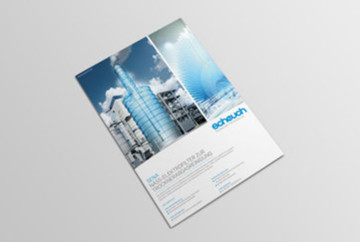Wet electrostatic separation
Wet electrostatic separation: basic principle and description of the process
Injecting recirculating water causes the crude gas to cool to its saturation point inside the crude gas duct. The quenched crude gas then enters the filter, where it is uniformly distributed across the entire filter cross-section. In the downstream gas scrubber, dust-type and gaseous organic compounds are separated.
The pre-cleaned gas now flows into the wet electrostatic precipitator. This consists of a high-voltage field with collecting electrodes and centrally located ionising electrodes. The particles and aerosols still present in the gas become negatively charged and move through the electrical field to the collecting surface. Periodic rinsing ensures that the collecting surfaces and ionising electrodes remain clean.
The rinse water remains in a closed loop system that includes an internal water processing unit. Sedimentation of solids in the water is made possible by special, built-in patented sedimentation surfaces in the water collection container. This sedimentation sludge is removed via a discharge screw and a downstream dewatering unit. The use of additives ensures a consistently high water quality.





